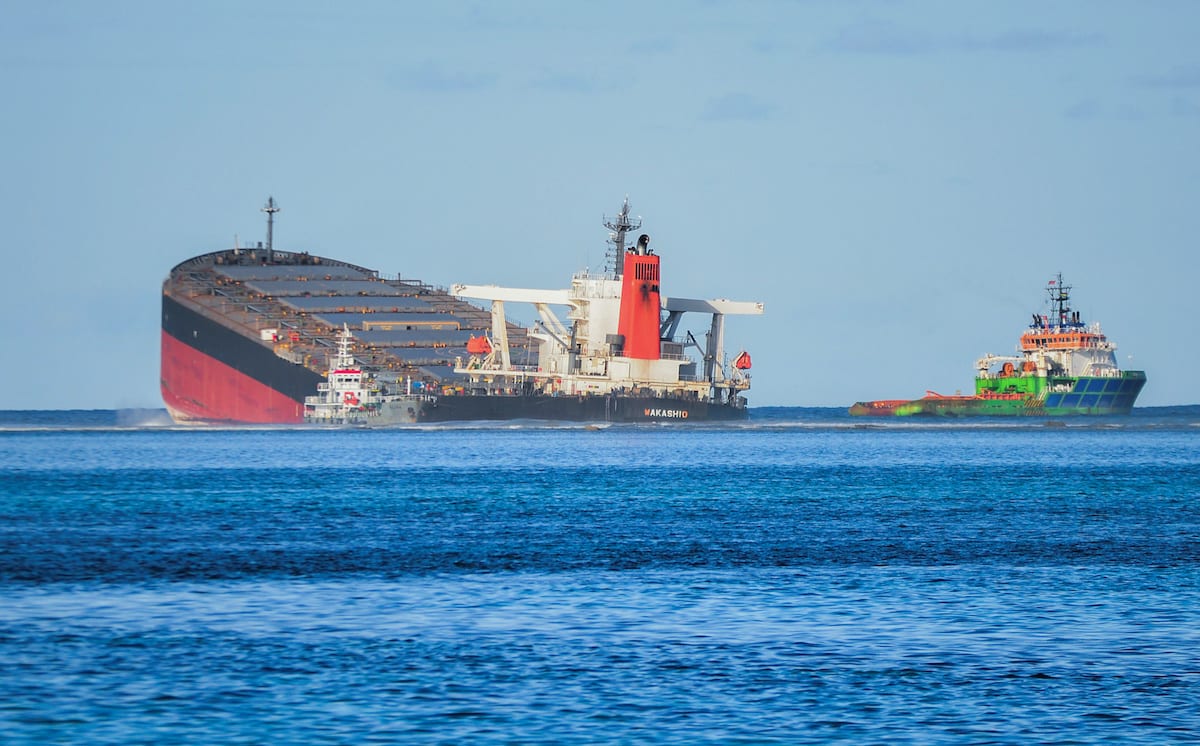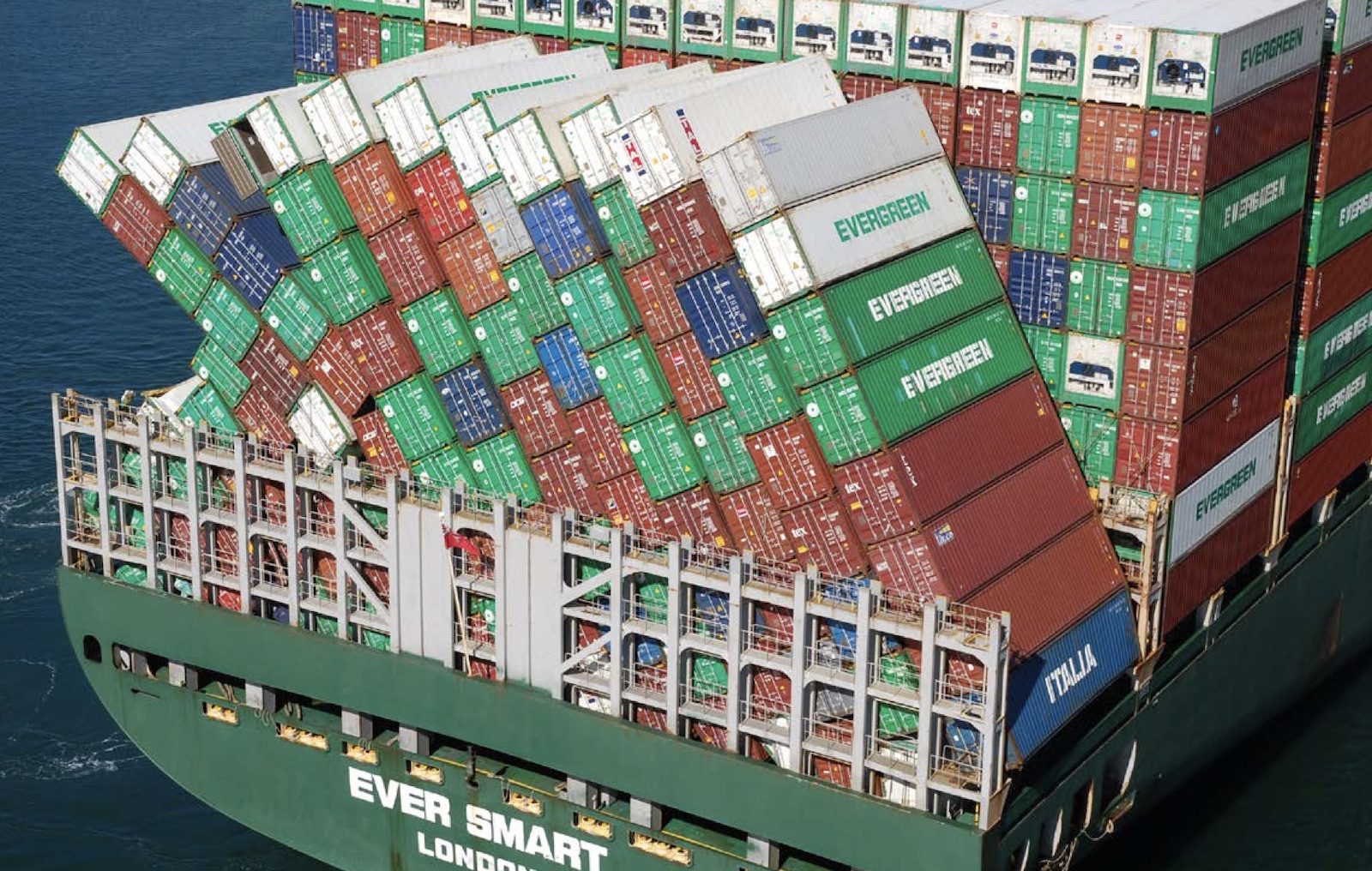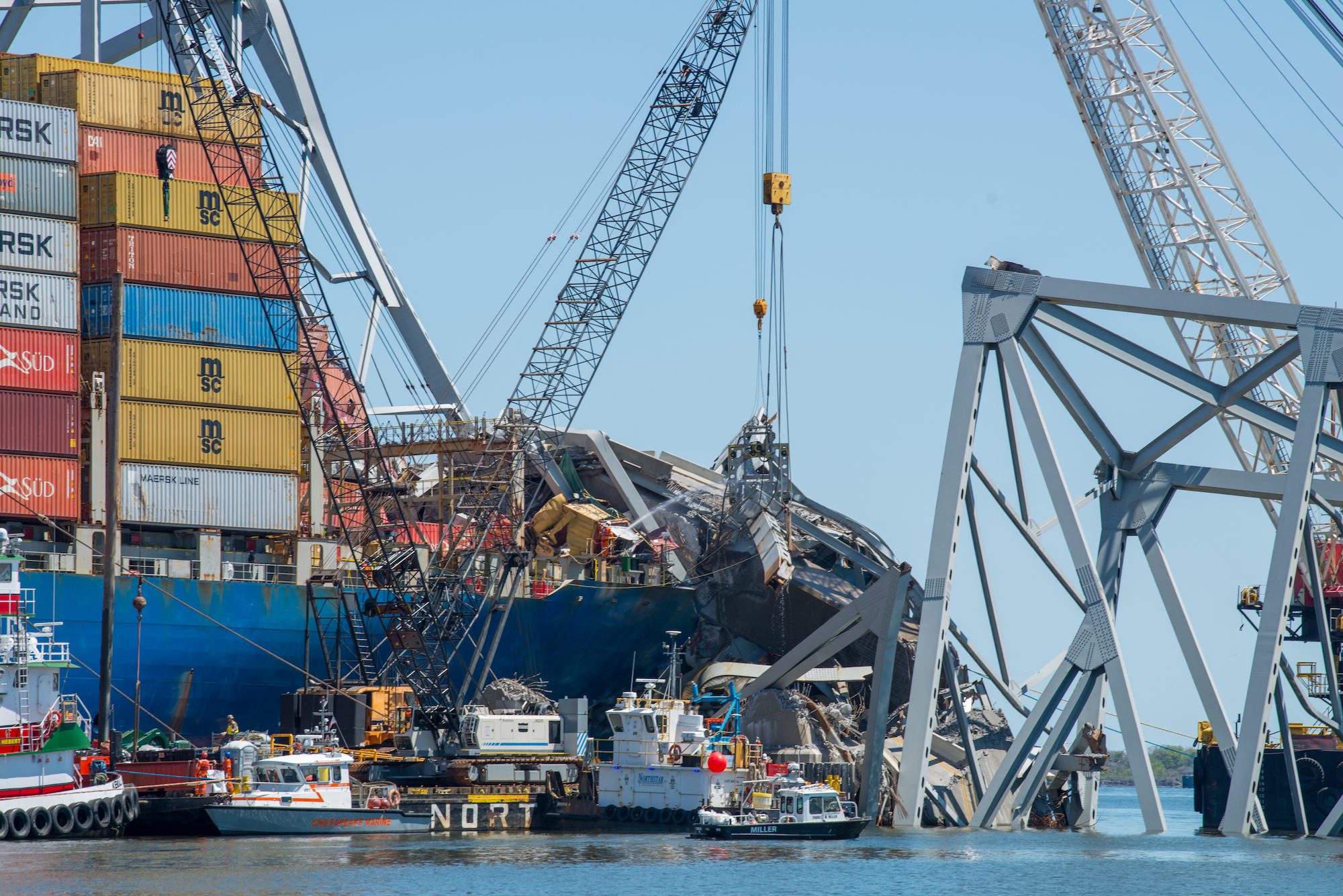Mitsui O.S.K. Lines (MOL) has released new details about the July grounding of the bulk carrier Wakashio in Mauritius and has detailed measures it’s taking to prevent the type of incident from happening again in the future.
MOL chartered the vessel from a subsidiary of Nagashiki Shipping Co.
The MV Wakashio was unladen when it strayed from shipping lanes and ran aground on a reef off Mauritius’ coast on July 25. The vessel’s condition deteriotriatd as it as on the reef and eventually resulted in a breach of a bunker fuel tank on August 6, resulting in some 1,000 tonnes of fuel to be leaked into the environment and creating an environmental disaster. The bow of the Wakashio was eventually towed out to sea and scuttled in late August, but operations to remove the ship’s stern are still underway and expected to last into next Spring.
Investigations by the flag state are on-going, but MOL has released today details from its own internal investigation into the accident, clearly pointing to lack of awareness by the ship’s crewmembers.
In today’s reporting on the incident, MOL offered the following background:
“Two days before the grounding of Wakashio (July 23), she changed her passage plan-the distance from the coast when sailing off the island of Mauritius-from 22 nautical miles (Note 1) to 5 nautical miles.
“On the day of grounding (July 25), she tried to further reduce the distance from the coast from 5 nautical miles to 2 nautical miles, to enter an area within the communication range of mobile phones and used a nautical chart without sufficient scale to confirm the accurate distance from the coast and water depth. In addition, a crewmember neglected appropriate watch-keeping (visually and by radar), even though she was trying to sail 2 nautical miles off the coast. As a result, she ran aground in shallow water (10m deep) 0.9 nautical miles off the coast of Mauritius.“
MOL also gave its determination on probable cause, writing:
“Because of not only the above-mentioned background, but also the fact that she had approached to other coasts several times even before the incident, they may have taken unsafe behaviors due to overconfidence that stems from complacency. In MOL’s view, such behavior on a large vessel reflects a lack of safety awareness.
“Another reason behind the cause is that the crewmembers lacked awareness of the guidelines on performing navigation in a safe manner and their efforts to conform were insufficient, because they did not prepare an appropriate passage plan that would have ensured appropriate performance, did not own and use the correct nautical map, and neglected visual and radar watchkeeping.”
To prevent accidents like the Wakashio from happening in the future, MOL has pledged to spend nearly $5 million on measures focussed on addressing the lack of safety and regulatory awareness among crew members on its owned and chartered vessels; improving ship operations including by strengthening shoreside support; and installing new hardware for things like monitoring bridge operations by video and upgrading onboard communication systems. MOL provided details of the measures on its website:
MOL will invest the equivalent of about JPY 500 million in measures to prevent reoccurrence of probable causes, based on the following measures.
- 1) Addressing the lack of safety awareness
- (1) Warning by circular
- Make sure personnel on vessels that owned by MOL or its subsidiaries (“MOL Vessels”) and vessels MOL charters (“Chartered Vessels”) know about the causes of the incident and measures to thoroughly enforce measures to prevent any such reoccurrence.
- (2) Holding safety campaign (dialogue with crewmembers)
- Targeting MOL Vessels, hold online dialogues with crewmembers onboard and on leave to exchange opinions about safety culture.
- For Chartered Vessels, enforce thorough prevention of reoccurrence by exchanging opinions about safety culture in a proactive manner.
- (3) Conduct a safety awareness survey for crewmembers on navigation watch duties
- Conduct a safety awareness survey targeting crewmembers on navigation watch duties on MOL Vessels and Chartered Vessels, to check fact-finding of crewmembers’ operations. Take necessary measures based on the results.
- 2) Addressing the lack of awareness of regulations on safe navigation and insufficient performance
- (1) Provide education related to operation of electronic nautical charts
- Targeting crewmembers on navigation watch duties on vessels that MOL Vessels and Chartered Vessels, provide information and education on correct use of electronic nautical charts.
- (2) Introduce fail-safe operation of electronic nautical charts
- Plan to introduce a service plan for MOL Vessels, which allows browsing of worldwide electronic charts at all scales, without requiring purchase of the chart. Approach shipowners of Chartered Vessels with the same plan.
- (3) Ensure thorough awareness and performance in line with guidelines necessary for safe navigation, through circulars and safety campaigns as mentioned above (1)
- 3) Enhancement of ship operation quality
- (1) Strengthen support system from shore side
- Improve skills of crewmembers in charge of ship operation and review operational procedures.
- After matters related to route selection are newly specified in voyage instructions, require the crewmember in charge of ship operation must check the status of conformity with the instructions. In addition, improve skills of crewmembers in charge of ship operation through inhouse seminars and so on related to ship movement monitoring methods and the newly established qualification system.
- Reinforce support by the Safety Operation Supporting Center (SOSC)
- Re-develop the watchkeeping operational manual to reinforce the 24-hour monitoring system.
- In another move to upgrade the monitoring system, establish a system using multi-faceted methods as well as manned monitoring, by proposing a plan to put in place a new grounding risk monitoring system.
- (2) Enhance involvement with shipowners
- Liaison meetings and mutual visits between MOL and shipowners
- Make individual and mutual visits in addition to shipowner liaison meetings (for executives/once a year) and shipowners/ship management companies safe operation liaison meetings (for officials/once a year), to check the safe operation system.
- Enhance involvement in selection of senior officers
- Check personal histories, etc. when changing senior officers (captain, chief engineer, chief officer, 1st engineer). In addition, convey MOL’s intention and instructions through briefings to senior officers by the shipowner and direct dialogue with MOL.
- Review ship’s quality and quality standard/valuation criteria related to the safety management system
- Review the quality standard MOL requests to shipowners, offer improvement requests as needed by ship inspections and company visits, and establish procedures to assess the selection of shipowner, improve the ship quality and safety management system with shipowners, and put these procedures into place.
- 4) Response on hardware side
- (1) Strengthen deterrent capacity by monitoring cameras on bridge
- Trials are underway on some MOL Vessels. Examine installation of cameras on all MOL Vessels, after verifying effectiveness of the trials.
- (2) Upgrade onboard communication systems
- Install high-speed and large-capacity communication systems on MOL Vessels.
- Request shipowners to install high-speed and large-capacity communication systems on Chartered Vessels.
You can find more on MOL’s website.

 Join The Club
Join The Club











